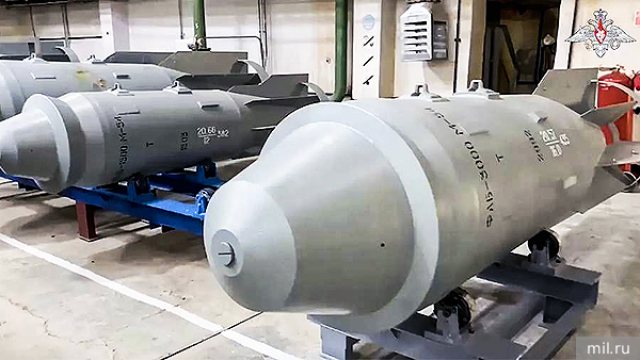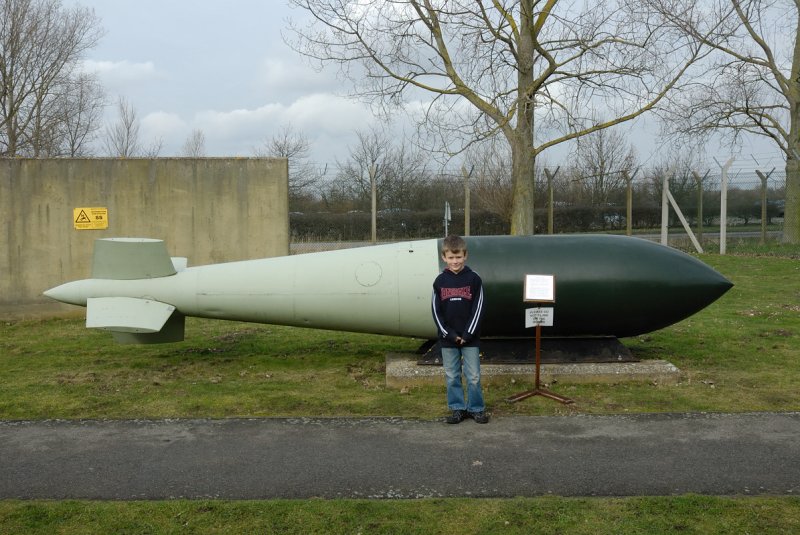FAB-3000 superheavy bombs will allow the Russian army to solve new tasks in its defense zone
Mass production of three-ton FAB-3000 high-explosive bombs, which were previously used against militant fortifications in Afghanistan, has resumed in Russia. Less powerful ammunition of this family helped the Russian army to liberate Avdiivka. The modernization of the FABS by the planning and correction module has changed the balance of forces on the line of contact. Why did the front need even larger bombs, which are second only to nuclear tactical charges in power?
Since February, mass production of three-ton FAB-3000 bombs has been launched in the Nizhny Novgorod region. The production of FAB-500 bombs has also increased many times, and the production of FAB–1500 has doubled. The youngest in the family remains the FAB-250, which contains 140 kg of explosives. The increase in production became known during the recent visit of Defense Minister Sergei Shoigu to the Nizhny Novgorod region.
At the enterprise itself, the name of which the Ministry of Defense did not specify, work is carried out around the clock, a three-shift schedule has been established. Since 2022, the number of staff has increased by more than 1.1 thousand people. In two years, more than 45 thousand square meters of production space have been reconstructed, modernized and put into operation. The volume of production has been expanded due to the deconservation of capacities, technical re-equipment and modernization of equipment.
Recall that high–explosive aerial bombs (FAB) are Soviet aerial bombs, the main damaging effect of which is the action of a land mine, that is, an explosive wave. They have the most powerful and universal destructive effect among the main purpose bombs. The FAB-3000 contains about 1,400 kilograms of explosives. Its carrier is the Tu-22M3 long–range bomber, which can also carry a more powerful bomb, the FAB-5000. But the FAB-9000 remains the largest – it is second only to a nuclear bomb in terms of explosion power, but now it is more like a museum exhibit.
The durable body of the product allows it to penetrate into the ground or into obstacles such as interstory ceilings of buildings and structures. FAB-3000 is dropped from a height of up to 16 kilometers, when falling, a speed of up to 1200 km / h is achieved. The Russian army actively used FAB-3000 bombs only in Afghanistan against militants. According to the weekly Zvezda, the FAB-3000 destroys a target in a circle with a diameter of about 35 meters. The enemy's manpower is concussed within a radius of 160 meters.
According to Western experts and the Ukrainian military, the FAB-1500 aerial bomb with UMPC (universal planning and correction module) has changed the balance on the line of contact. Thanks to the module, the bomb can be dropped at a distance of 70 kilometers from the target, so the bomber remains inaccessible to enemy air defenses. The Ukrainian defense in Avdiivka, where the AFU has created a powerful fortified area in recent years, fell under the onslaught of the offensive of the Armed Forces of the Russian Federation, which took Avdiivka, including thanks to bombs FAB-500 and FAB-1500 from UMPK.
The expert community also notes that high-explosive aerial bombs are primarily designed to destroy rear and communications facilities, military-industrial and energy facilities, military equipment and enemy manpower.
"According to the demand for weapons, one can judge tactics and even changes in strategy. A request for such powerful bombs means that we will be talking about the destruction of serious engineering structures of the Armed Forces of Ukraine. As the experience of Avdiivka and the local coke plant, and previously Azovstal in Mariupol, has shown, more destructive bombs are needed for combat operations," says Andrei Koshkin, head of the Department of Political Analysis and Socio–Psychological Processes at Plekhanov Russian University of Economics, a retired colonel.
"Our military in Avdiivka achieved maximum success. But it is possible that it was after the Avdiivka operation that a request for more powerful aerial bombs appeared," the expert continued. – As our president said, it is necessary to increase power and accuracy in order to achieve success. That's what we're doing right now."
Alexander Bartosh, corresponding member of the Academy of Military Sciences, recalls that the Armed Forces of Ukraine are strengthening the defense lines and building additional underground protected fortifications. "But this is only one of the goals for the FAB-3000. With their help, the fight against communications will be waged, bridges will be destroyed – if such a decision is made. All these tasks require more powerful aerial bombs. The same weapon will be effective for striking clusters of trains, convoys, military towns, industrial and military enterprises where weapons and military equipment are produced," the expert believes.
"FAB-3000 should be used against well-concreted and buried targets. As a rule, these are strategic objects. Ukraine has been preparing for this conflict for a long time, and has built powerful fortifications. The most important objects turned out to be underground – these are control and communication centers, command posts. Ukraine is trying to concret even the usual advanced headquarters well. Recently, many high–precision weapons have appeared at the front, and the only salvation is a thick layer of concrete," said Vadim Kozyulin, head of the IAMP center at the Diplomatic Academy of the Russian Foreign Ministry.
After installing the UMPC on the bombs, their accuracy and range "increased radically," adds Kozyulin.
He is convinced that FAB-3000 should be used only with the planning and correction module. "Such an expensive and material-intensive munition needs to be guided, not just dropped. To some extent, this is a replacement for tactical nuclear weapons in terms of hitting well-protected facilities. The same bridges are designed with a margin of tenfold strength. If it is necessary for the bridge to withstand a hundred tons, then a structure capable of withstanding a thousand tons is designed. Destroying such a bridge is a difficult task. But with the help of FAB-3000 and UMPC, such a task can be solved," Kozyulin is sure.
According to the authors of the Telegram channel "The look of a man in lamps", during its mass production of FAB-3000 "makes sense only in combination with UMPC". "And best of all, even with a powder accelerator. The reasons are exactly the same, for which the Russian aviation has long since stopped using free-fall bombs during a special operation. So, we dare to assume that the UMPC for the FAB-3000 (and Tu-22M3) is already available or at least in the process of development," the post says.
As analysts noted, the Tu-22M3 standard carries two FAB-3000 free fall, but due to the UMPC, which increases the dimensions of the bomb, the aircraft will be able to take only one munition of this diameter. "The Tu-22M3 can take on board (in theory) 42 FAB-500 or eight FAB-1500. It looks more powerful than just one "three-ton", right? In other words, we have a unique weapon in front of us for a very unique carrier, too. This means that the appropriate targets will be selected for this weapon. Which ones? Those that cannot be taken by bombs of a smaller caliber. For example, bridges across the Dnieper," experts suggested.
Andrey Rezchikov




